Why fly Control Line speed?
Well the short answer is that it is good fun, has great camaraderie, has interesting technology and finally is well organised.
The origins
Well it will come as no surprise to readers that pretty well as soon as control line flying was established that people would want to find out who had the fastest model? and thus control line speed was born.
The reality was that this initial CL speed flying took place in the USA as they had a head start in control line flying due to the pioneering work by Jim Walker on two line flying using a bellcrank, and the Stanzels with their monoline system.
Very soon the event spread Globally and has had a good presence in the UK ever since, the UK has enjoyed great success in CL speed and currently three World records are held by English flier Ken Morrisey.
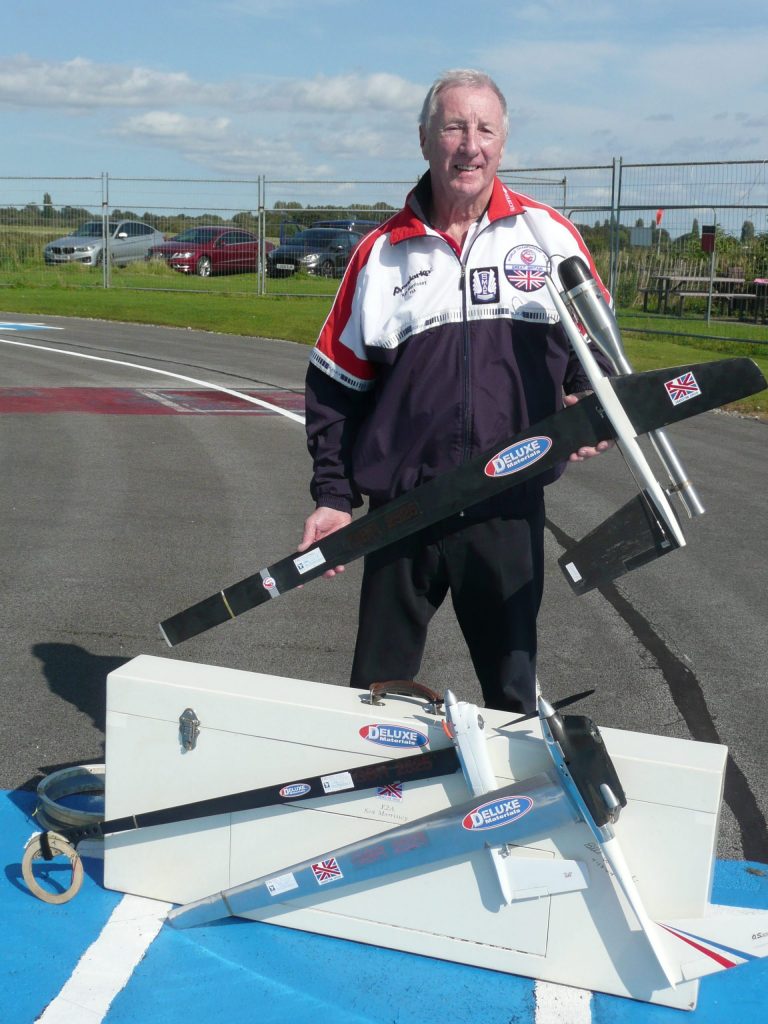
Ken Morrisey with 3 current World Record holding models
Today
To this day that basic premise of who has the fastest CL model still exists. So the event is very easy to understand, there is no opinion and little judgement involved in determining the winner, even the timing is now handled by a superb automatic timing system called Transitrace, no stop watch errors to worry about now !!
There are 15 classes of CL speed model flown in the UK but a clever scoring system enables all of the classes to compete together, so an 049 model competes against a 60 size or a Fast Jet brute, but how does a 140 mph model compete with a model that can fly at 210 to 215 mph?
Well it is quite simple and very elegant really, your score or ranking in the meeting is established by how well you have performed against the existing record for your class.
So if in Sport Jet which has a record speed of 150 mph you flew 142.5mph you would have a score of 95%, if one of your competitors flew 202 mph in the 60 class which has a record of 215 mph he would have a score of 94% and therefore your 142.5 mph would win.
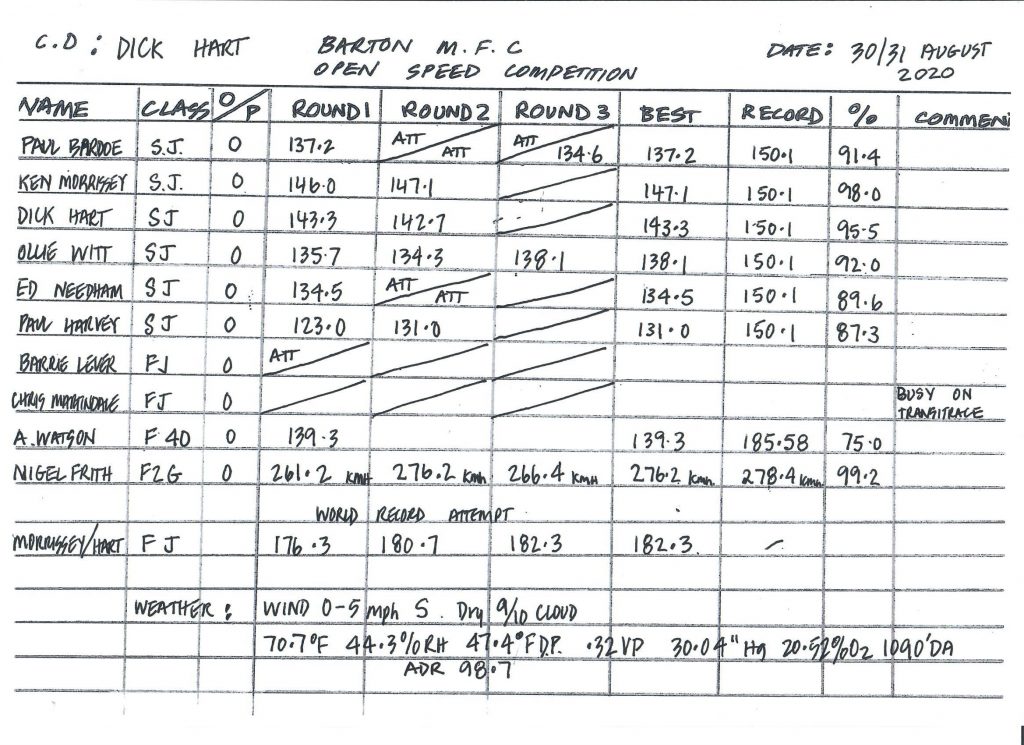
Typical result sheet showing record ratios as a %
There are very few rules in CL speed for the beginner to worry about, there are maximum weight rules and minimum line diameter rulings for safety reasons, some classes only allow 2 line controls with no groupers. And Sport Jet mandates that the controls are all external.
Groupers and line systems.
There are 3 line systems allowed in UK Open CL speed. These are conventional 2 lines, monoline and grouped 2 lines. 2 line control is the slowest and easiest to make work, with monoline being a bit more difficult. With grouped 2 lines, one line is held in the slipstream of the other line and this is the most streamlined but it is tricky to get working right.
There are rules on dangerous chemicals in the fuel and this is all well documented in the BMFA rules along with the weights and line diameters mentioned above.
Engine tuning is completely unlimited in IC classes, if you have an idea of how you would modify an engine then control line speed is the arena to test your ideas. This is one reason that in the past pretty well most of the engine factories who produced high performance engines were active in control line speed, names such as Irvine, K&B, Rossi, Super Tigre, OPS, Picco, Moki and MVVS are just a few that spring to mind.
Model design in BMFA Open speed is only limited by the competitors imagination. If you have a design idea then you can try it out.
All flights are over a set number of laps according to the model class. Line length is also controlled by the class. To prevent whipping of the model to gain additional speed, the pilot must place his hand/wrist that he is flying with in a ‘U’ shaped yoke mounted on top of metal pylon in the circle centre.
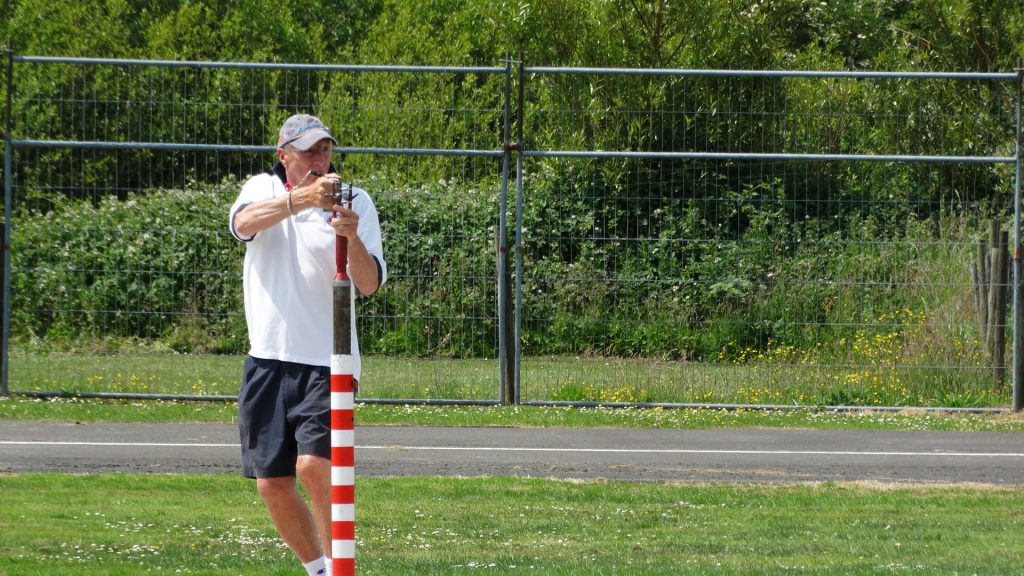
‘U’ shaped yoke to prevent assisting the model by whipping
What classes are recommended for newcomers to CL speed?
There are two good introductory class to control line speed in the UK, these are IC powered 21N and pulse jet powered Sport Jet.
There are certain advantages to both classes, in this and forthcoming articles we will concentrate on the IC powered 21N models as there are plans and articles in Aeromodeller for Sport Jets in the February 2021 and April 2021 issues.
21N is the most restricted of Open CL speed classes flown in the UK and these restrictions are to really make it easier and less intimidating for newcomers.
The first and most important of these restrictions is that experienced CL speed competitors cannot fly in 21N, if you remember the record ratio %’s that we talked about earlier, well any flier who has recorded a result better than 80% in any BMFA Open CL speed meeting cannot compete in 21N.
There are restrictions on the exhaust system in 21N rules that prevent tuned pipes or megaphone/mini pipes being used. This makes the setup and flight tuning of the engine easier to achieve.
There is a plentiful supply of rear exhaust 21 size car engines which can easily be adapted for use in 21N, the engines from some companies such as Force of Taiwan are amazing quality and can be purchased new for around £75.00.
21N models can be built at very low cost if someone is prepared to get out on the workbench and make up parts for themselves and implement there own ideas.
Your first competition – Help in Abundance
This is the “icing on the cake” (pardon the pun) for all your hard work in constructing a 21N speed model. When you turn up at a competition do not be apprehensive, we know that is easy to say as we have all done it and feel that we may be imposing on other guy’s time.
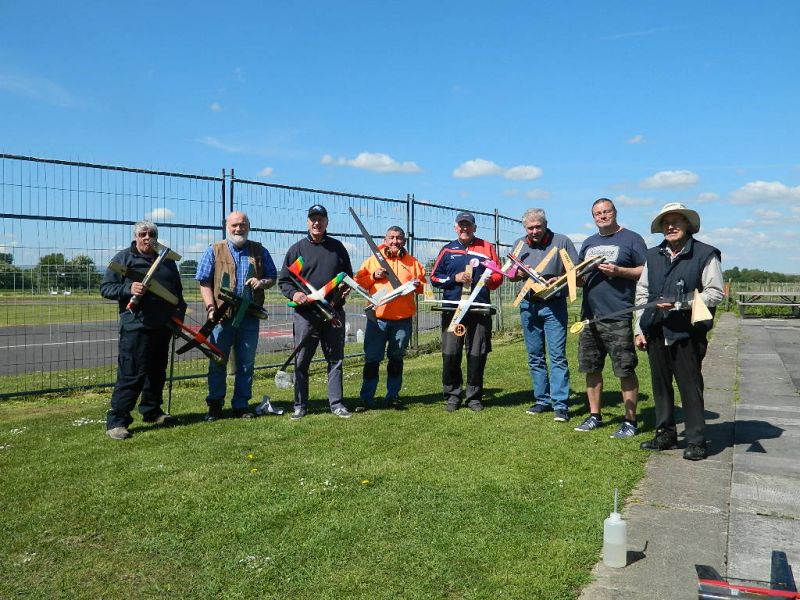
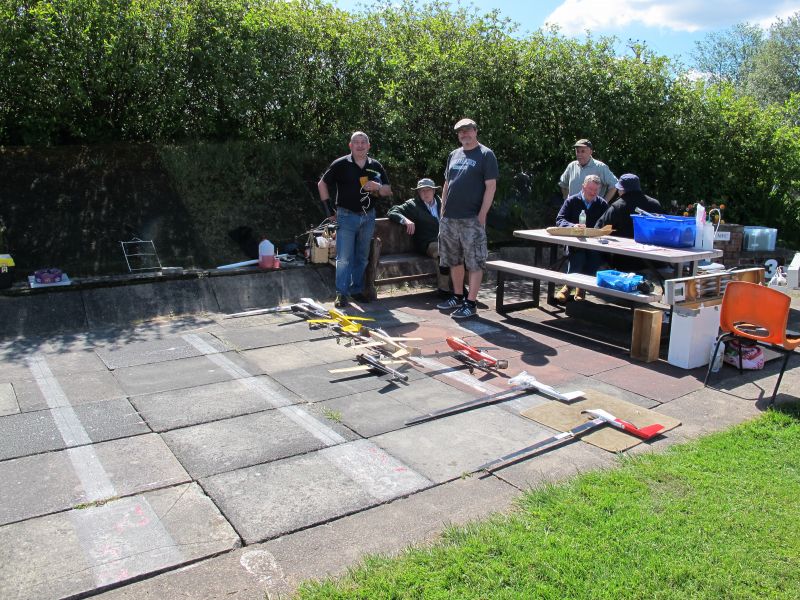
If you come to one of the speed meetings at Barton MFC you will be made more than welcome and given more assistance than you can shake a stick at. We have on most occasions put newcomers in the caged circle with one of our own models to give them the experience, rather than committing your new ship to the air.
Make yourself known to the guys in the pits and you will find help and encouragement in buckets full. The photos of the pitting area show the guys all willing to give advice, encouragement and if able to will sort out any problems you have on the day, but rest assured, you will leave after your first visit having flown something.
Control line speed is a very inclusive competition event, this means there is something for everyone at a CL speed meeting, ideally competitors build and fly their own models but if they were unsure about their flying ability on any given day then they can nominate a proxy flier so long as the entrant is involved in the setup and starting of the model.
So this enables older or medically unwell people to compete on equal terms with everyone else.
Hopefully it can be seen that the routes into CL speed are more accessible than ever before and we look forward to seeing you at an event in 2021.
In the next part of this introduction to CL speed we will be discussing the 21N class in more detail and presenting a design and show hardware that is for sale for newcomers to dip their toes into the CL speed circles with.
If you have any questions then contact the Open CL speed group through the contact details on the website at address https://cl-speed.bmfa.uk/contact-us.
